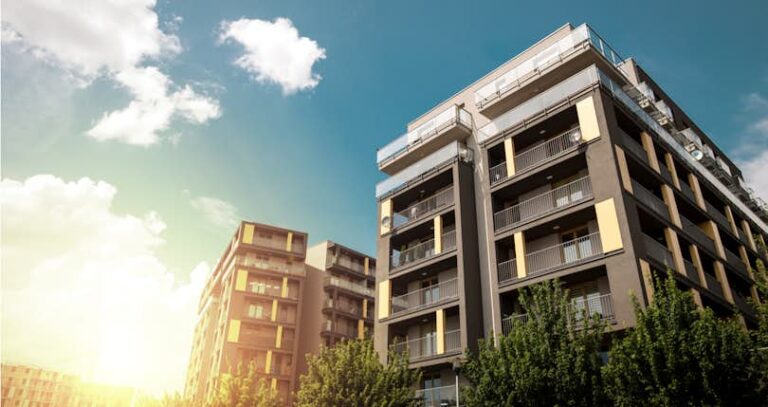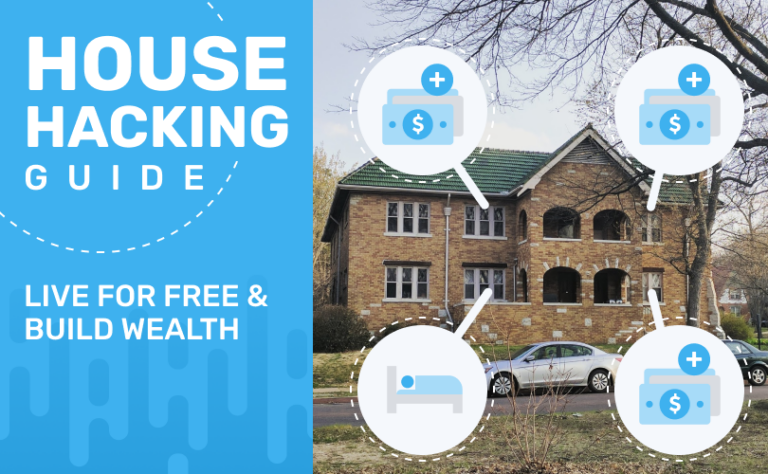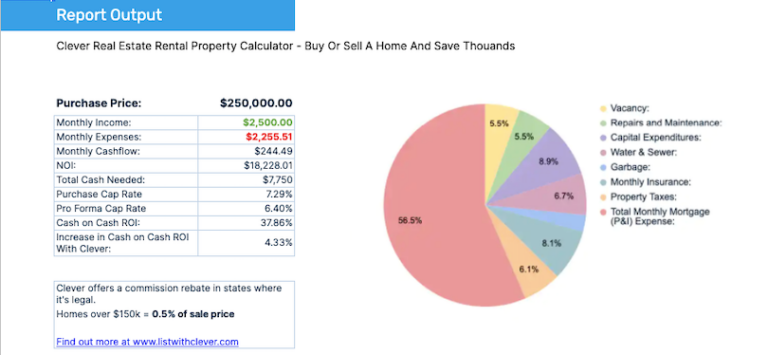| ✍️ Editor's note: We strive to provide objective, independent advice. When you decide to use a product or service we link to, we may earn a commission. Learn more. |
👉 Jump to: Cap rate calculators | What is capitalization rate? | Rental property example | How cap rate can increase property value | FAQs
Whether you’re interested in small rental property, 100+ unit apartment buildings, or commercial real estate, capitalization rate — cap rate, for short — might be the most important metric to analyze a prospective deal.
You can also use cap rate as a lens to view your current portfolio and help you determine if it makes sense to sell an asset and invest in something with a better return.
This article explains how to use cap rates to your advantage — and even contains two free cap rate calculators you can use to model deals.
💰 MORE: Learn how to get cash back when you buy your next rental property
The two best capitalization rate calculators
Determine the value of a current or prospective investment property using these free cap rate calculators. Use the first calculator to find the cap rate, and use the second calculator to estimate your property valuation based on its net operating income (NOI) and cap rate.
Cap rate calculator
Analyze the capitalization rate of an investment property with this cap rate calculator. Enter the property's purchase price, your expected gross yearly income, and your estimated annual operating expenses.
Calculate property value with cap rate
Determine a property's value based on its net operating income (NOI) — your annual income after subtracting expenses — and the cap rate of your choosing.
Important: When modeling cap rate, it’s vital that you accurately model your expenses.
It’s common for property to be listed and advertised with a high cap rate; however, once I actually run the numbers with more conservative expenses, the deal starts looking more like a money pit than a good investment opportunity.
In my experience, the most common expenses investors fail to estimate are significant, future capital expenditures — such as a new roof, new sewer, etc. — or the combination of property management and leasing fees.
If you're thinking about buying an investment property, Clever can help.
We've partnered top agents that specialize in investment properties across the country, from major brands and top-rated local brokerages.
The agent we connect you with can help you find properties both on and off market, and walk you through the entire process.
Best of all, in the states that allow it, you could get cash back after closing.
Getting matched with an agent is free and there's no obligation to move forward.
What is capitalization rate?
Capitalization rate — or cap rate for short — is the rate of return for an investment after you subtract all operating expenses from the gross income.
| Cap rate formula:Net operating income / Current property value = Cap rate |
When it comes to calculating cap rate, it's important to remember that NOI (net operating income) doesn’t include any mortgage expenses.
| 💡 Quick tip: When I was new to real estate, it was easier for me to think about cap rate as the annual percentage of return on my initial investment if I’d purchased the property in cash, as that would remove any mortgage or interest expenses from my calculations. |
Rental property cap rate example
Let’s walk through a hypothetical example that highlights some of the risks of only using a basic cap rate formula to model a deal.
Yesterday a real estate broker I work with sent over two properties he thought I’d be interested in investing in — let’s call them Property A and Property B.
Below is a table that shows some information about the two properties.
| Property A | Property B | |
|---|---|---|
| Purchase price | $250,000 | $250,000 |
| Yearly income | $30,000 | $45,000 |
| Expenses | $15,000 | $20,000 |
| Net operating income | $15,000 | $25,000 |
| Cap rate | 6% | 10% |
Looking only at the table, it seems clear that property B is a great deal. I should call the broker back and put in an offer, right?
Not so fast.
This table is missing a lot of important information. Before we go any further, we need to understand:
- Are these numbers actuals — or estimates from the broker or seller?
- Where are these properties located? Are the neighborhoods safe?
- How stable are the leases on this building? Are any of the tenants delinquent?
- How old are the core systems of each building (e.g., HVAC, roof, sewer, kitchens, etc.)?
- What are the typical cap rates in each neighborhood?
So I look at these questions, call up the agent again, and I get the following answers:
| Property A | Property B | |
|---|---|---|
| Are the financials actuals or estimates? | Expenses based on trailing 12 months - income based on new lease | Expenses are an estimate, and income is based on current rent roll with $3,000 in vacancy built in ($48k gross rents) |
| How are the neighborhoods? | B-class neighborhood | C-class neighborhood |
| How stable are the leases? | 1 tenant — current on rent | This is an 8-unit apartment building with rents of $500 |
| How is the condition of the building? | Most core systems are up to date, but the roof and HVAC will need to be replaced in the next few years | Building needs new tuckpointing, a new roof, and plumbing is 50+ years old |
| What are typical cap rates in the area? | 6% | 9% |
With new information in hand, let’s take a look at Property A.
This seems to be a decent property in pretty good condition, but a new HVAC and roof will be expensive. Were I to set aside an escrow fund to cover these expenses, Property A’s cap rate would fall below the typical 6% I can find in this area.
When I buy real estate it must be a good deal, as I only have enough capital for a small number of purchases. As such, I decide to pass on Property A.
Now onto Property B.
Property B is interesting because it’s one building with 8 units. Unfortunately, I know from experience that lower-income properties like this will have more than $3,000 out of $48,000 in potential rent not to be collected due to vacancy and delinquency.
I also know from experience that $20,000 to run 8 apartments in a building — especially one that needs this much work and is located in a C-class neighborhood — is not going to happen.
I think Property B would be lucky to come in at a 5% cap rate — not the typical 9% I can find in this neighborhood.
After diving into the numbers a bit more, I call back the agent and let them know I’m going to pass. I’ll save my capital until I find something better.
I had this hypothetical example end in a dead deal for good reason — 95% of the deals you look at will be just like this.
Remember, the number-one way to make money in real estate is to "buy right." If you’re buying up every deal in sight, you’re simply not going to last as an investor.
Video: How cap rate can increase property value
The video below shows me modeling an actual deal I found listed for sale. In this tutorial, watch me model out the expenses and calculate the property’s cap rate with the rental property calculator I built for my personal use.
What is a good cap rate for a rental property?
A good cap rate for a rental property depends on your market, neighborhood, and tolerance for risk.
I get this question at least twice a week and I always give the same answer: It depends.
Without knowing your market, neighborhood, and tolerance for risk, I can’t give you a "good" cap rate.
Personally, I invest in St. Louis — both St. Louis City and County. If I’m looking for properties in B-class neighborhoods, I usually look for a 7% cap rate or better. If I’m investing in a C-class neighborhood, I look for a 9% cap rate or better.
That said, I’m usually looking at the cap rate I’ll achieve after I finish renovations and increase the rent, as it's difficult to find cap rates that high without doing significant work to your investment.
Average cap rates by metro
Use the table below to see the typical cap rates for homes in different cities across the country. You can see how cap rates change by market.
How savvy investors use cap rate for massive returns
In 2019, my business partner and I stabilized a 12plex we’d recently purchased in St. Louis. Over the course of the year, we changed property managers, removed 30% of the tenants who weren’t paying, and did major renovations to both the exterior and interior of the buildings.
All in — we spent all of the rent from the property on renovations. On our tax returns, we probably show a loss of more than $30,000 in 2019.
During this process we raised rents by ~$1,000 per month across the 12plex and drastically lowered future expenses, raising NOI (net operating income) by $24,000 per year.
As you can see from the chart in the previous section, this building is a C-class property and would sell for a capitalization rate of about 8%. Using the formula of NOI divided by cap rate, we get:
| Net operating income (NOI) | $24,000 |
| Cap rate | 8% |
| Value generated | $300,000 |
Put simply, we lost $30,000 in 2019, but generated $300,000 in value through the power of NOI and cap rates.
After I wrote this cap rate guide, we refinanced the property, which allowed us to use a good portion of the equity we created to buy more real estate and continue this BRRRR strategy.
Related articles
FAQs about capitalization rates
How do you calculate a cap rate?
You can calculate the capitalization rate of a property by dividing the property's net operating income (NOI) by the current property value. Determine your property's NOI by subtracting your operating expenses from your total annual income.
For example, say you have a $300,000 property. You make $40,000 a year in income from the property, with $20,000 in annual operating expenses, leaving you with an NOI of $20,000. To find the capitalization rate, divide $20,000 by $300,000 = 0.06, or 6%. That's your cap rate.
Calculate your property's cap rate with our free cap rate formula calculator.
How do you find average cap rates by zip code?
In general, it's not possible to find average cap rates by zip code. This is because cap rates depend on a number of factors, such as expenses and home value, and these fluctuate over time and depend on your individual situation. Calculate the cap rate for your investment property using this free cap rate calculator.
What does a 7.5% cap rate mean?
If a property or investment has a 7.5% capitalization rate, that means the owner will likely receive 7.5% of the value in annual gross income. For example, if your investment property value is $300,000, a 7.5% cap rate would give you an annual return of $22,500.
Is 5% a good cap rate?
A 5% cap rate is on the low end for what real estate investors consider a worthwhile investment, but it's typically considered good. Most investors look for an annual cap rate between 4% and 10%. However, the definition of a good cap rate can vary dramatically depending on your situation, market, neighborhood, and overall risk tolerance.
Is 9% a good cap rate?
A 9% cap rate is typically considered a very good rate of return. In general, real estate investors look for an annual cap rate that ranges from 4–10%, so finding an investment property with a 9% cap rate should set you up for success. Just make sure you're factoring in the cost of oft-overlooked expenses like property management fees and future capital expenditures when you calculate the rental property's cap rate.




